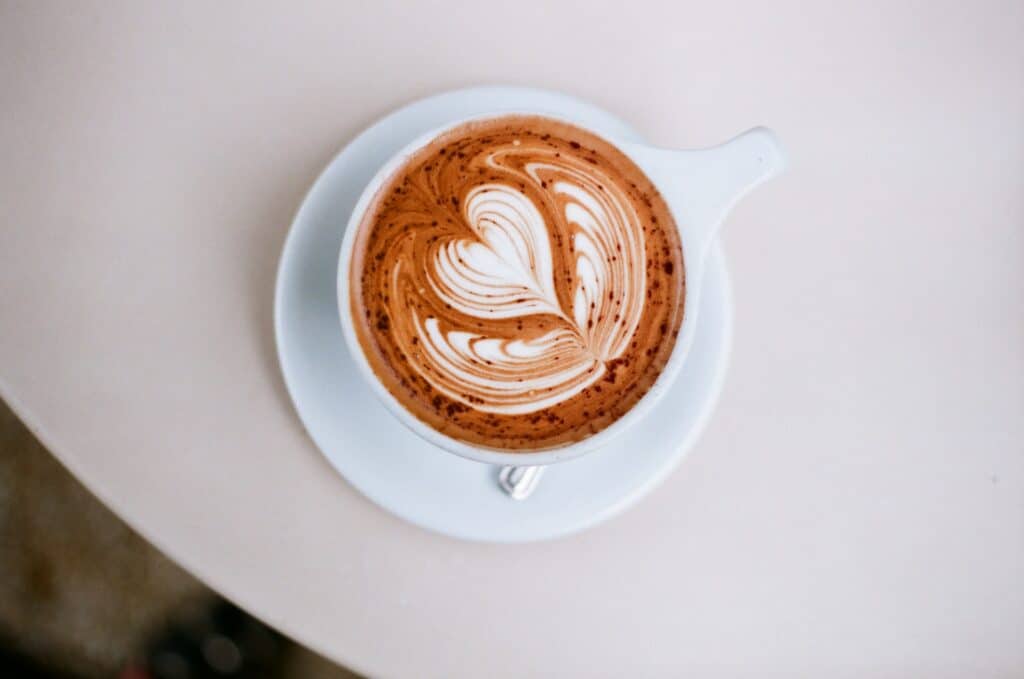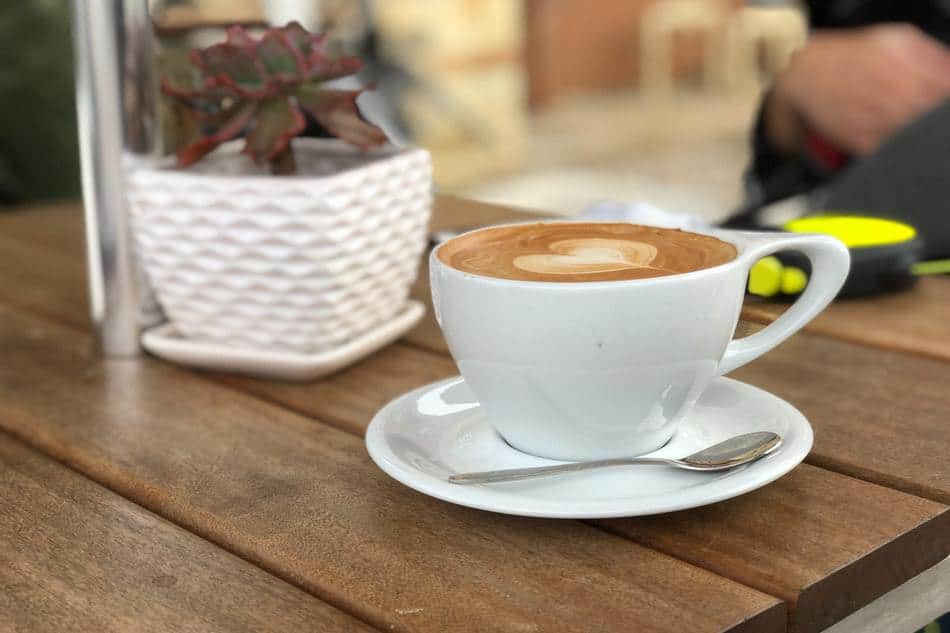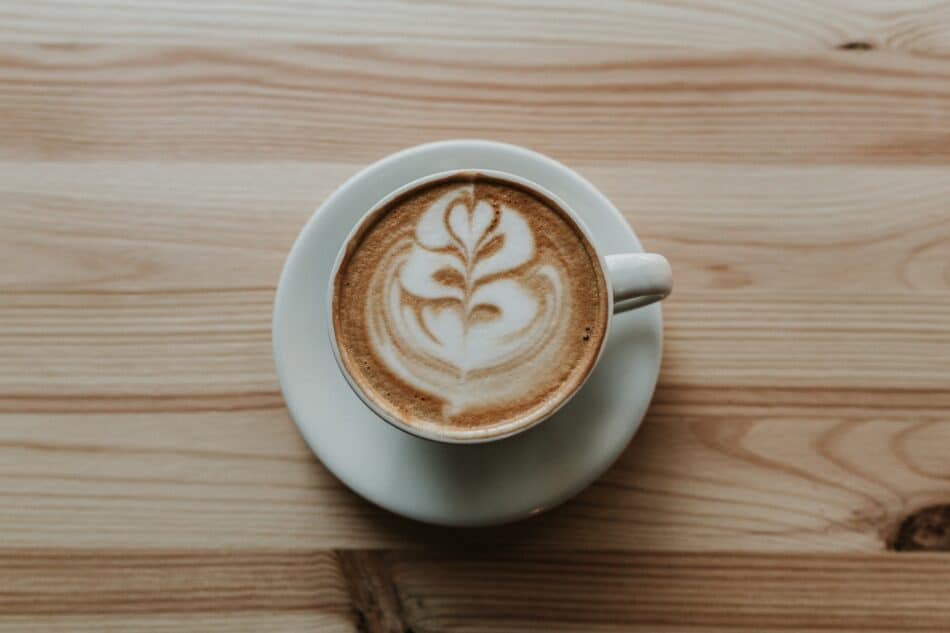It’s a question that has been debated for a while: is a latte hot or cold? The answer you’d get to know. In this article, I will discuss the perfect temperature for serving lattes and how to make sure your drinks are always just right!
There isn’t a definitive answer, as different people have different preferences. Some like their lattes piping hot, while others prefer them to be lukewarm or even cold.
If you’re not sure what temperature you like your latte, start by trying it at the temperature it’s typically served at – around 155 degrees Fahrenheit. From there, you can adjust according to your preferences.
Just remember that adding more milk will lower the drink’s overall temperature.
What Is A Latte?
A latte is a type of coffee made with espresso and steamed milk. It originates from Italy and is now popular all over the world. Lattes are usually served in tall glasses with a layer of foam on top.
There are various ways to brew a tasty latte, but the most common method is to combine a shot of espresso and steamed milk. Espresso is made by forcing measured hot water (at the right temperature) through coffee beans that are finely ground. This creates a strong, concentrated coffee with a rich flavor. Steamed milk is simply milk that has been heated until it becomes steamy and frothy.
We all know that a latte is a coffee with steamed milk, but what temperature is it supposed to be served?
Let’s take a look at the temperature of this tasty latte in different places.
Latte At Cafes
The next time you’re enjoying a latte at your favorite cafe, take a moment to think about the temperature of your drink. Did you know that the ideal temperature for coffee is between 155 and 175 degrees Fahrenheit? That’s hot! And yet, many cafes serve lattes that are closer to 140 degrees.
Why does this matter? Well, for one thing, it affects the flavor of your drink. When coffee is brewed at a lower temperature, it can taste sour or acidic. But when it’s brewed at a higher temperature, it brings out the natural sweetness of the beans.
Of course, there’s a trade-off here. If your latte is too hot, it can scald your tongue. So it’s important to find a balance that works for you.

Lattes On The Go
In the morning, I like to get my day started with a cup of coffee. I usually make it at home, but there are times when I’m in a rush and need to grab something on the go. When that happens, I always go for a latte.
But have you ever noticed that lattes seem to be served at different temperatures depending on where you get them? It’s true! And after doing some research, I’ve discovered that three main factors contribute to this difference.
The first factor is the type of milk used. If whole milk is used, the latte will be hotter than if skim milk is used. This is because whole milk has a higher fat content, which means it takes longer to heat up.
The second factor is the size of the cup. A larger cup will hold more heat, so the latte will be hotter than if it’s served in a smaller cup.
And finally, the third factor is the type of espresso used. A darker roast espresso will be cooler than a lighter roast espresso. This is because dark roast beans have been roasted for longer, which makes them less dense and allows them to absorb more heat.
So there you have it! The next time you’re grabbing a latte on the go, keep these three factors in mind and you’ll be able to enjoy your coffee at just the right temperature. Cheers!

Lattes At Home
I was surprised to find that the temperatures of lattes made at home were all over the place. I tested four different ways of making a latte – using a stovetop espresso maker, an electric kettle, a microwave, and a French press – and recorded the temperature of the resulting drink. Here are my findings:
The stovetop espresso maker produced the hottest latte, with an average temperature of 196 degrees Fahrenheit. The electric kettle came in second, with an average temperature of 185 degrees Fahrenheit. The microwave produced a lukewarm latte, with an average temperature of 160 degrees Fahrenheit. And finally, the French press produced the coolest latte, with an average temperature of 149 degrees Fahrenheit.
So if you’re looking for a piping hot latte, your best bet is to use a stovetop espresso maker. But if you’re looking for a cooler, more refreshing drink, the French press is your best bet.
Can I Make Cold Lattes?
Here’s the thing about cold lattes: they’re delicious, but they’re also a little bit tricky to make. If you don’t have the right ingredients or equipment, you can end up with a watery mess. But if you follow these simple tips, you’ll be able to make a delicious cold latte at home.
- To start, you’ll need to gather your supplies. You’ll need milk, coffee, sugar, and ice. Once you have all of your ingredients, it’s time to start making your latte.
- First, brew your coffee using your preferred method. Then, add the milk and sugar to the coffee and stir until dissolved.
- Next, add the ice and stir again until everything is combined.
And that’s it! You now have a delicious cold latte that you can enjoy at home. So go ahead and give it a try. I’m sure you’ll love it.
BONUS: If you want to make your latte extra special, try adding a flavoring like vanilla or chocolate before adding the ice. This will give your latte an extra boost of flavor. Yum!
Final Words
But at the end of the day, it doesn’t matter whether a latte is hot or cold. It’s still a delicious drink that can be enjoyed in any weather. So go ahead and order your favorite espresso beverage, no matter what the temperature is outside. Your taste buds will thank you!
Related Articles

